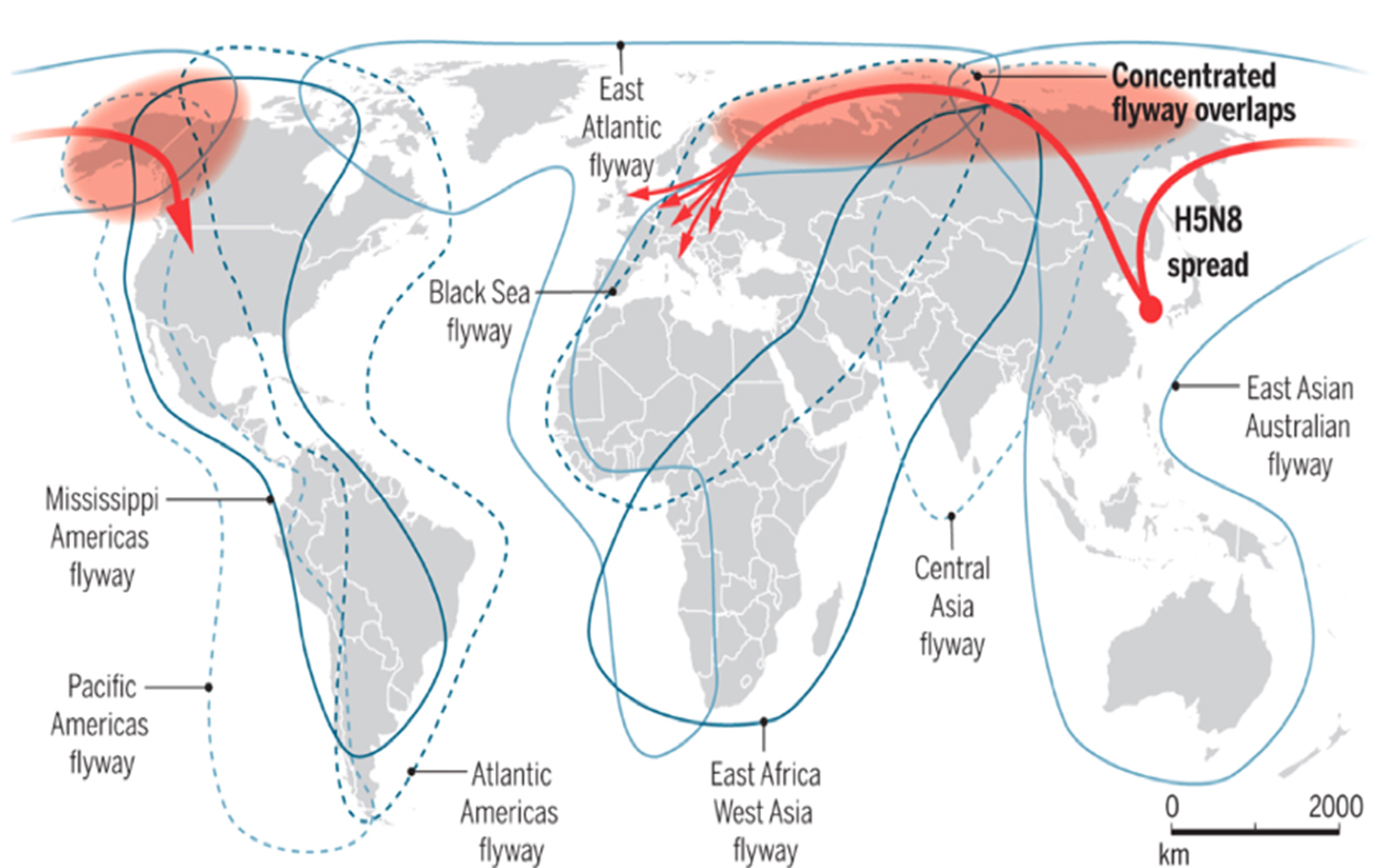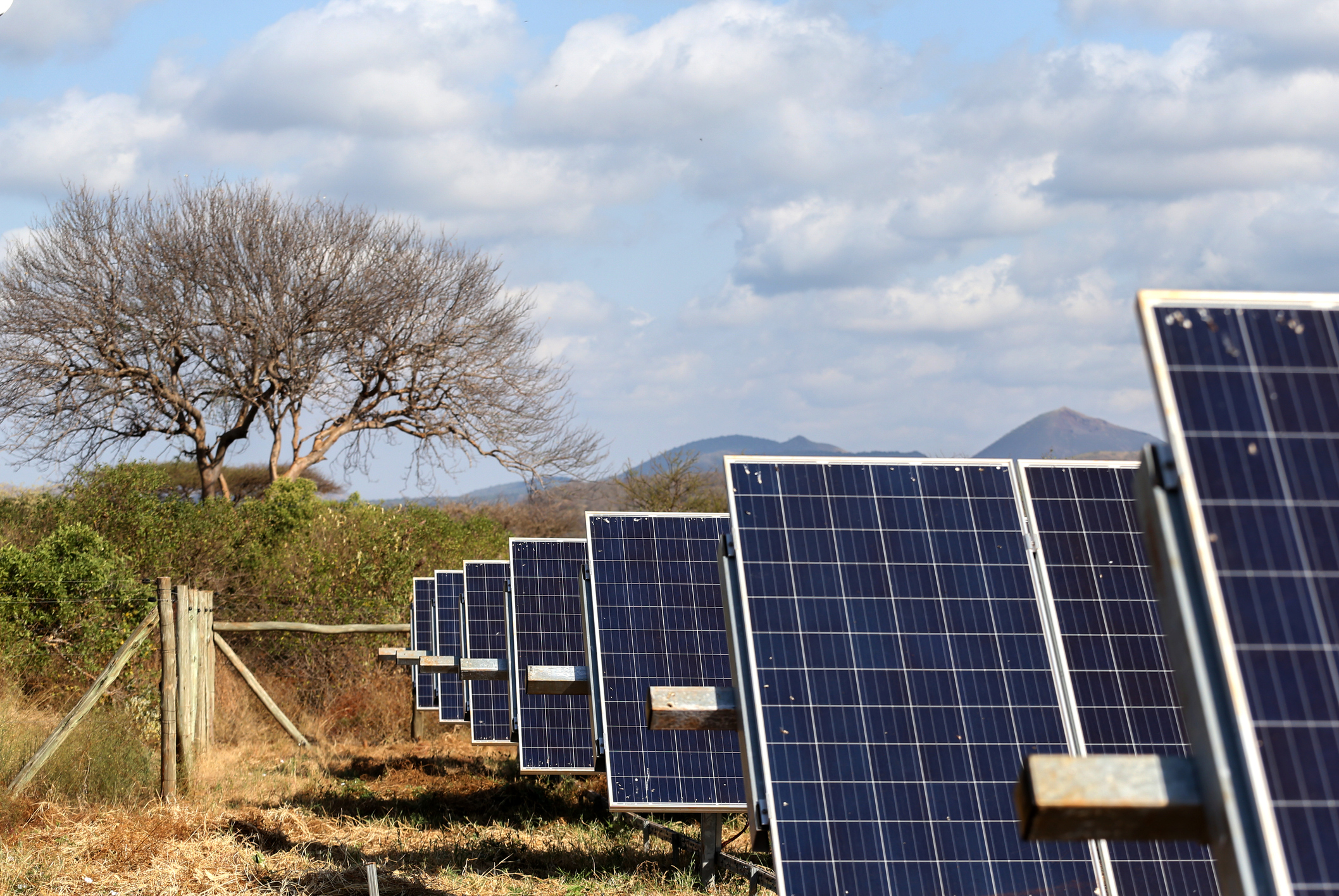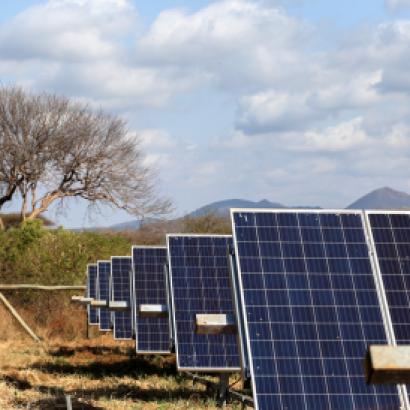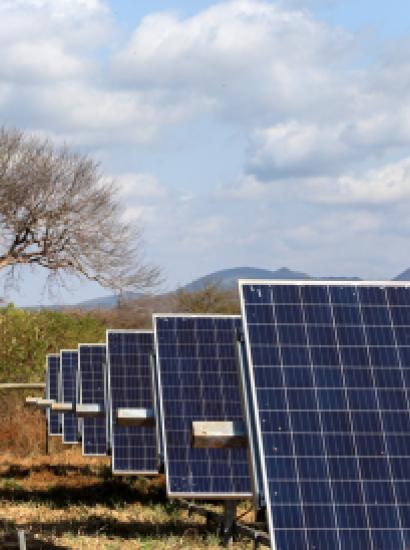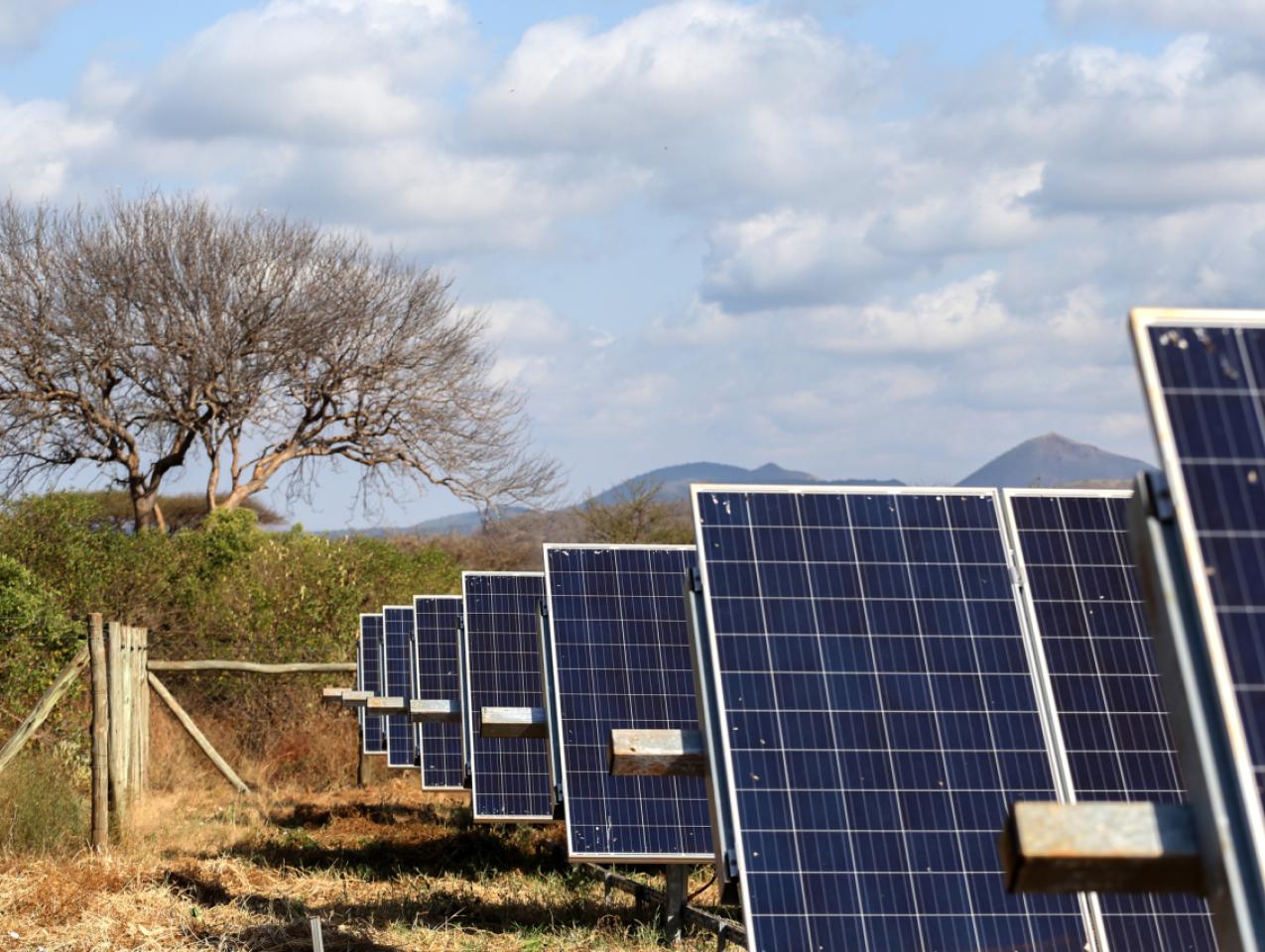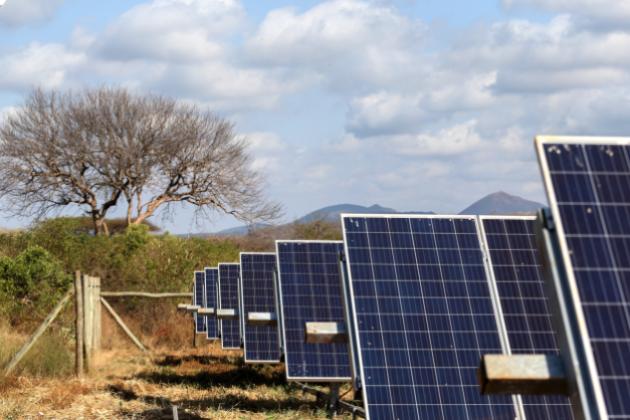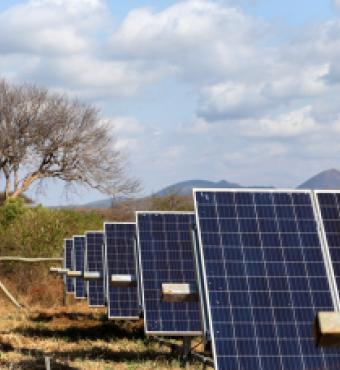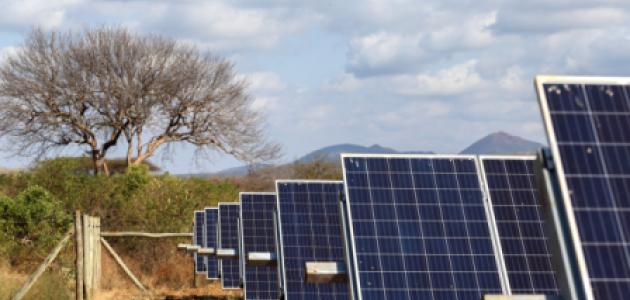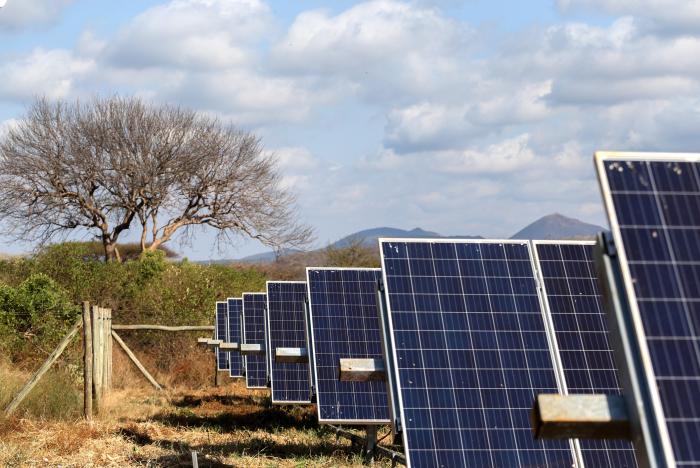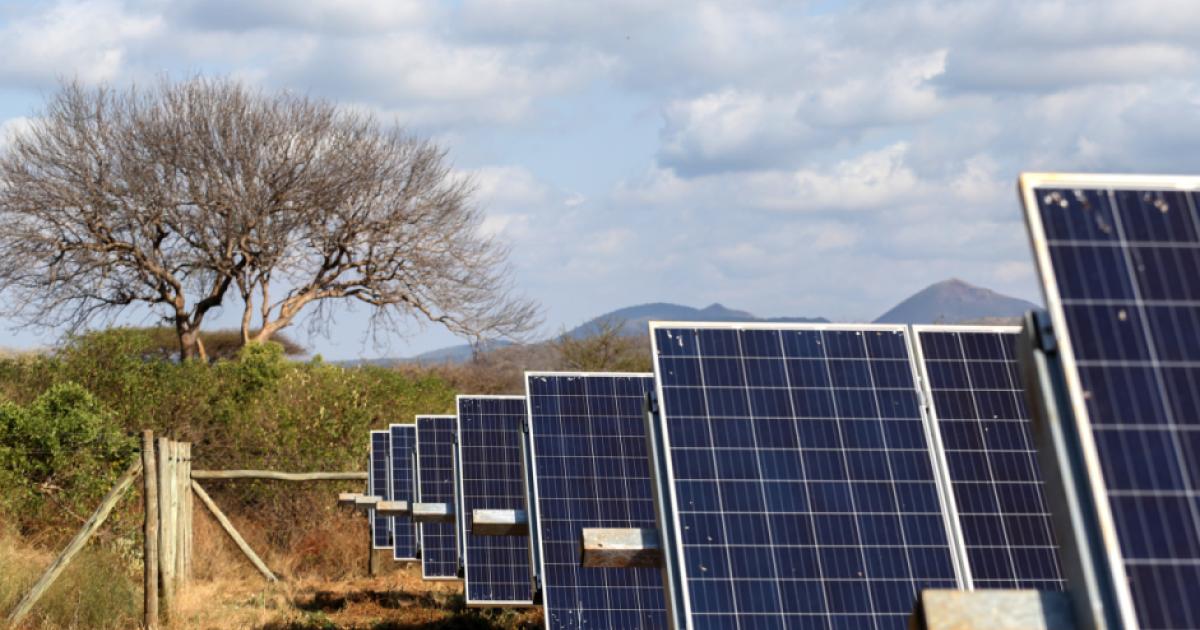Africa is often described as the continent most at risk to the negative effects of climate change, both because of the expected change itself and because of the perceived lack of capacity of Africans and their governments to adapt. This paper provides an overview of what is known and unknown about Africa’s climate future and examines how possible changes may challenge four critical and inter-related areas: agriculture, health, migration, and conflict.
A primary conclusion is that our understanding of climate change in Africa is disturbingly poor as a result of gaping holes in historic data availability, the complicated nature of climate processes affecting tropical regions in general and Africa in particular and the severe underrepresentation of climate research and researchers on Africa. There is nonetheless broad consensus that temperatures will rise faster than global averages, with the Intergovernmental Panel on Climate Change (IPCC) base scenario projecting an increase of about 4 degrees Celsius by the end of the century, though there is little agreement on how that change will impact precipitation. As an example, models using differing but plausible assumptions about the interrelations between Africa’s climate and the melting of the Greenland ice sheet on one hand and trends in sea surface temperature on the other can produce scenarios in which rainfall in the Sahel increases 200–300 percent from current levels or falls to desert conditions. What does seem certain is that variability in timing and quantity of rainfall will increase with significant social consequences.
Africa’s agricultural sector, including livestock, is particularly vulnerable to rainfall change because of the limited ability to control water, poor agricultural research infrastructure, and already low productivity which limits options for adaptation. This vulnerability constitutes a more general threat to African states because of the continued high dependence on the sector for livelihoods and food security. Vulnerability will be compounded by growing food demand from an increasing and increasingly wealthy population.
While a changing climate will have some direct health consequences, induced changes in the extent and location within Africa of disease vectors such as mosquitos and the increased threat of zoonotic disease transmission will have a greater impact on health. Africa is also likely to face new disease challenges caused by the impacts of climate change outside the continent. For example, the thawing of northern hemisphere permafrost will free long trapped viruses that will use avian migration to move across continents. Specific predictions are impossible, but the majority of infectious diseases that have emerged in the last 100 years have had a zoonotic origin. Health systems in and outside of Africa will face new challenges.
Rising temperatures will also influence the habitability of some areas. However, the largest climate related migration pressures will likely result from diminishing agricultural opportunities, adding to the inexorable move of people from rural to urban areas already underway and, to a lesser extent, to movement across national boundaries. Migration related to climate shock has already been associated with conflict in Africa, for example in the Sahel, and Darfur has been cited as the world’s first climate conflict. While climate (or weather) has played a role in conflict and no doubt will continue do so in the future, there is limited direct evidence of climate or climate change as a primary cause of conflict. Nonetheless, local, national and international institutions designed to peacefully manage land, water, and other resources under earlier climate regimes will struggle under changing conditions.
Four caveats should be considered before using these conclusions to inform action. First, it is foolhardy to use the singular to discuss a continent with the immense geography and vast diversity of populations and systems as Africa. Some of Africa’s 50+ states will become drier, others wetter. Effects in Burundi and Burkina Faso where agriculture accounts for more than 80% of employment will be much different than in Angola, South Africa, and Mauritius where it accounts for less than 10%. Second, while the effects of climate change will be significant, they are only one driver of change amongst many including population, technologic transformation, and governmental evolution. Outcomes will depend not on climate change alone but on the human systems on which change occurs. Third, perhaps the one thing that all African governments can agree on is the culpability of the others for the climate predicaments Africa will face. A shared interest in climate solutions can perhaps ironically provide an avenue for new forms of cooperation between African states. The intercontinental dimensions of disease may also encourage new forms of cooperation between African states and the rest of the world. Finally, the history of post-Colonial Africa has been a history of adaptation to difficult conditions. Africans will continue to adapt to a generally harsher and more variable climate environment. But the path to adaptation can be made much easier if it is well paved. The paper ends with brief reflections on how this might be done.
Evidence of Change in Africa’s Climate
Our understanding of climate change is arguably weaker for Africa than any other major region. Existing historical knowledge comes from spatially disparate sources including documentary reconstruction in Southern Africa, proxy records of African alpine glacial recession, temperature proxies from lakes Tanganyika and Malawi, borehole records from southern Africa, and a limited instrumental record.12 These sources together suggest a warming trend from the late 19th century, a period of cooling in the mid-20th century, and nearly continuous increases in temperatures from the 1970s to the present with an acceleration over the past quarter century. [SEE FIGURE 1] The most recent report of the IPCC concluded that the average temperature increase for all of Africa over the last 50-100 years has been about 0.5 degrees C.3
In providing its overall results, the IPCC also presented spatially disaggregated temperature change calculations for the period 1901–2012 for those regions with a sufficient instrumental record. As shown in the upper left quadrant of Figure 2, the area for which data was insufficient to calculate change is as striking as the actual change. The blank area on the map is slightly more than 2/3 the size of the entire United States.
Precipitation data was even more limited, and no calculations were possible for more than half the continent, even when the period of interest was reduced to 1951-2010. [SEE FIGURE 2, LOWER LEFT] More data have since been made available,4 but even the expanded collection has 100-year records from only 300–400 stations. This is approximately equivalent to having only one station for a country the size of Denmark. Since stations with longer records tend to be spatially clustered based on colonial interests, data gaps are functionally even more pronounced than averages suggest.
There has been a major reduction since the early 1980s in the number of stations from which data is available [SEE FIGURE 3] due to a decline in the number of functioning stations (e.g. in the D.R. Congo) and increasing costs and difficulty in accessing data that does exist. Because of data gaps, scientists studying African climate have developed multiple sources with the result that many models are based on differing base data, complicating comparison and the development of shared understanding of processes.5
Based on the longest possible time series (typically mid-19th century), consistent, though often statistically insignificant, declines in precipitation over the vast majority of the continent are evident, with exceptions primarily in central and eastern Africa.6 Trends based on the IPCC’s shorter time frames (half century) are more spatially varied, with decreases in perception along the Sahel belt and in the western equatorial region and increases in the north and south and the eastern equatorial region, though most trends were again not statistically significant. [SEE FIGURE 2, LOWER LEFT] The differences between the two time series highlight the temporally and spatially complicated relationship between temperature and precipitation. They also highlight the challenge of isolating the direct impact of climate change on African precipitation from other multi-decadal processes, which themselves are changing with a changing climate, as discussed further below.
Finally, as important as changes in averages are changes in extremes. Africa has experienced hotter and longer heat waves of greater spatial extent in the 21st century than in the last 2 decades of the 20th century.7 Longer periods without rain and more intense precipitation when rainfall does occur have also been observed.8,9,10 The seasonal timing of rainfall has also shifted, changing cropping seasons and generally shortening the growing season.
Expected Future Impacts of Global Climate Change on Africa’s Climate
The exemplar of global climate change is rising atmospheric temperatures. The warming atmosphere in turn accelerates the hydrologic cycle by increasing its water holding capacity (7% increase per degree C increase) and by increasing potential evapotranspiration (2% increase per degree C increase). While average global rainfall increases with rising temperatures, the drivers behind its distribution and variation continue, implying even greater precipitation near the equator, further reductions towards the subtropical highs at approximately 30 degrees north and south latitude, and greater intra- and inter-year variability overall. [SEE APPENDIX for an explanation of global climate systems and Africa]
Models of these mechanisms drive the IPCC’s projections of Africa’s climate future. The IPCC’s base scenario (RCP8.5) shows average temperatures in Africa rising faster than global averages, increasing 2.0 degrees Celsius above the mid-20th century baseline by 2050 and 4 degrees above by the end of the 21st century. The greatest increase is in the desert north and south and lowest near the equator.
Under the same IPCC scenario, warmer temperatures are projected to intensify existing precipitation patterns, with increases in rainfall in equatorial regions of up to 30% and decreases of 10–20% in Africa’s far north and south. [SEE FIGURE 4, BOTTOM RIGHT] There is also a general agreement that extreme events (higher high temperatures, longer periods between rainfall, more intense rainfall) and variability will increase, but little certainty on the extent or geographic variation.
All precipitation scenarios are in fact highly uncertain, and reasonable but differing assumptions and models of global processes can result in projections for Africa with substantial differences in both sign and magnitude. For example, Defrance et al. (2017)11 demonstrate how the melting of the Greenland ice sheet could rapidly and drastically reduce precipitation from the west African monsoon, substantially reducing arable land. They estimate that tens to hundreds of millions of people would be forced to migrate from rural to urban areas in response. In contrast, Schewe & Levermann (2017)12 show how Sahelian rainfall could abruptly increase 40–300% once sea surface temperature increases beyond a relatively low threshold.
Implications for Africa
Temperatures in Africa have risen, rainfall patterns changed, and warming will continue with large, but largely uncertain impacts, on rainfall. We now turn to how these changes may impact agriculture and health and in turn influence migration and conflict.
Agriculture, Agricultural Livelihoods, and Food Security
A large share of African agriculture already occurs at the thermal and rainfall limits of current crops, and so small increases in temperature and/or decreases in water availability will have disproportionately large consequences on arable area and yield. The IPCC base scenario projects negative consequences for the overwhelming majority of the continent’s agriculture, with the north and south particularly hard hit. The highlands of east and north-east Africa are expected to benefit because of higher rainfall and carbon fertilization. While the IPCC provides little analysis of the critically important livestock sector, other projections suggest substantial, though uneven, negative effects due to direct physiological stress on animals from higher temperatures, reductions in forage availability and quality, and other factors.13 The potential harm to herders is obvious, but poor farmers often derive large shares of their incomes from livestock and will also be disproportionately affected. There are also implications for conflict between farmers and herders as has been publicized, for example, in the Sahel, that are described below.
Impacts on agriculture and, to a lesser extent livestock, could be substantially mitigated through water control (irrigation and the storage infrastructure behind it), allowing farmers to adapt to changes in absolute levels of rainfall, increased variability in its timing, and shifts in its arrival. Africa, however, has by far the lowest level of water control of any world region. As a comparison, the United States has the ability to store 6,000 cubic meters of water per person. Africa’s storage capacity is 120 cubic meters per person, the lowest of any major world region. Of this limited storage, the majority is in Zimbabwe and South Africa in the south and the Maghreb and Egypt in the north, leaving most of the continent at the mercy of the skies. While limited water control is partly a failure of finance and political will, a major reason is geographic. Few of Africa’s river systems are well suited to irrigation development. In addition, Africa is not blessed with aquifers that could fuel the groundwater irrigation revolutions that have driven agricultural growth over the last half-century in South Asia, China, the United States, Australia and elsewhere.
Research and extension related to seed development and farming practices could also provide a means for agrarian adaptation. Africa lags the world though in agricultural research, partly a legacy of colonial and Green Revolution era neglect but exacerbated and continued by the choices of most African governments. Public and private investment in agricultural research now makes up less than 4% of global totals even though Africa accounts for 17% of the world population.14 Recognizing the problem of low investment, African states and international partners began in 2006 to use the Comprehensive Africa Agriculture Development Programme (CAADP) under the African Union to set and monitor national targets for agricultural research and extension. While useful in drawing attention to the issue of research investment, most states still fail to meet their own funding goals, and nearly half of all African states spend less now on agricultural research than they did in 1980 after adjusting for the rising costs of research.15
An already difficult climate, limited water control, and under-investment in research have all contributed to Africa’s low agricultural productivity. Average grain yields have only recently risen above one ton per hectare, a commonly referenced threshold of minimal productivity. There are notable positive exceptions to the low averages, including the countries of the Maghreb, Egypt, and South Africa. With over 80% of land holdings less than one hectare16 and with limited off farm employment in most rural areas, low productivity translates into poverty and therefore limited ability to invest in adaptation, withstand variability, and generate surplus for urban consumers. Incentives to invest in productivity enhancement are further reduced by poor infrastructure that reduces market access.
The climate challenges to agriculture in Africa are all the more significant given that the sector still accounts for more than 50% of employment and that rural populations are expected to continue rising for at least another decade. However, while the challenges are many, there are reasons to doubt the most apocalyptic scenarios of Africa’s agricultural and food security future. African farmers have faced significant challenges from all fronts throughout the independence period. Rather than falling into Malthusian collapse, the agricultural sector has grown, just keeping up with already rapid population growth and highlighting the ability of African farmers, if not always their governments and the donor community, to adapt to challenging and changing conditions even with limited resources. Nonetheless, most analyses of the physical impacts of climate change on African agriculture assume no adaptation by farmers. Farmers choose crops to match current conditions and as conditions change, crops, seeds, and farming systems will change with them, partly mitigating negative effects. This process may be helped by rapidly declining costs in some areas of biotechnology that will make it increasingly possible to produce seeds that meet the changing needs of highly varied African farmers in ways the previous Green Revolution did not. However, taking advantage of this opportunity will require changes in the way international agricultural research is conceived and the nature of public-private partnerships in research.
Health and Health Systems
Many northern Africa cities are already located where peak temperatures are near the limits of human capacity. Expected increases in temperature, particularly higher peak temperature as well as longer heat waves, will increase mortality if countervailing measures are not taken (e.g. India has dramatically reduced heat wave fatalities through simple measures including public and medical sector awareness, changes in school and office hours, and opening of parks). The effect may be locally significant for some large conurbations in the north, but modest in the overall context of African mortality. Locally significant health impacts can similarly be expected from other climate related changes including increased rainfall variability (i.e. drought and flood) and greater likelihood of dust storms.
More significant health impacts are likely to occur as a result of shifts in the geographic distribution of vector-borne and zoonotic disease.17 As examples, shifts are predicted in the areas most suitable for year-round malaria transmission from coastal West Africa to the region between the Democratic Republic of Congo and Uganda,18 and there is already evidence that malarial zones in east Africa have extended above 1000 meters as temperature and rainfall have increased. Disease burden may of course decline in other areas as they become less suitable for existing disease vectors.
Shifts in disease distribution will also cause new health pressures. In the short term, health systems may not be prepared for diagnosis and treatment. Over the longer term, populations without previous exposure will continue to be challenged by limited natural immunity and new disease interaction. HIV-infected individuals, for example, are much more susceptible to Malaria infection than the overall population.19
Climate change will also drive changes in the geography of vertebrate wildlife due to habitat modification and movement of human populations (see below) searching for new agricultural and pasture opportunities. Separately and together these movements will bring new interactions between wildlife, livestock, and humans. While the health impacts are hard to predict in their specifics, over 60% of human pathogens are zoonotic or transmissible from animals,20 and most emerging infectious diseases of current concern (e.g. HIV/AIDS, SARS, H1N1, MERS) are zoonotic. New interactions will bring new infectious disease.
New pathogens will also result from climate change impacts outside the African continent. In 2016-17, the avian influenza virus H5N8 spread from poultry farms in China to Russia and West Africa via wild bird migration as shown in Figure 4.21,22 The impact of this latest wave of bird flu was primarily on the poultry sector rather than humans, and there is no reason to attribute the event to climate change. However, we know that bacteria and viruses are deposited by migrating avian populations in the extremes of northern temperate regions and lie dormant in snow and ice for years, decades, or centuries. Higher temperatures are melting permafrost and freeing long-dormant bacteria and viruses for which humans have no recent immunity. Pathogens will use avian migration to move across large distances23,24 and create new risks for avian to human crossover. Again, while specific predictions are problematic, the global impact has the potential to be catastrophic as we learned just a century ago during the Spanish Flu pandemic.
As explained by Morens and Fauci, two leaders in our understanding of global infectious disease, human health outcomes are a function of the microbial agent itself, the condition of the human host as well as the human environment.25 The negative impacts of climate change on health outcomes will be amplified to the extent that the food and water security challenges discussed above are not addressed and reduced to the extent that health systems are prepared for future change. Unfortunately, national health systems in many African state are ill-prepared even for current health challenges.26 The 2014-16 Ebola outbreak showed that the capability of international health systems to deal with global disease challenges was much lower than hoped.
Migration
Increasing peak temperatures and heat waves will reduce the habitability of some cities, causing outright migration to other urban centers as discussed above, though likely slowing the ongoing rate of in-migration as well. Because Africa’s physical geography tends not to encourage large coastal populations, sea level rise is not likely to be as significant a force in migration as expected in some other regions, though local exceptions may exist including in Egypt and Ghana.
More significant climate related population shifts can be expected from rural to urban areas. We know already that significant rural-to-urban migration in Africa can occur in response to low rainfall, for example as occurred during the Sahelian drought of the 1970s when farmers moved southwards to urban centers.27,28,29,30 The potential for future movement is substantial, since more than half of Africa’s population is still engaged directly in agriculture and more than 2/3 still resides in rural areas.
However, the propensity to migrate from rural to urban areas is a function of multiple variables including but not limited to socio-economic status, group affiliation, and urban opportunity. In some cases, only the financially well off may be able to use migration as an adaptive response to worsening environmental conditions, because migration is costly. In other cases, women and men with high social capital may pool their household resources to create financial buffers significant enough to mitigate the impact of environmental changes that might otherwise have pushed them to migration.31
While often presented as a problem to be avoided, urbanization can be a force for improved livelihoods, since labor productivity and wage opportunities in urban manufacturing and service sectors are generally higher than in agriculture. Rural out migration can in turn motivate productivity increases of remaining agricultural labor. This is the story of Europe, much of Asia and the United States, where farming now accounts for just 2% of employment. But for the opportunity of urbanization to be fulfilled, it must be driven at least as much by the pull of opportunity in cities as the push from worsening rural conditions. This means that national economic policy and performance and its impact on cities is critical to rural climate adaption.
There has been substantial discussion of the potential impact of climate change on international migration, both within Africa and from Africa to other regions, particularly Europe. There are clear examples when climate crises drove populations across African borders (e.g. the Sahel crises from the 1970s through the 1980s), and we can expect an increase in the number of climate events that could contribute to rapid migration in the future. However, the specific impact of climate events or climate change on movement across African borders, like its impact on rural to urban migration, has been and will continue to be a function of many variables including the nature of colonial borders, current politics, and the overall state of national economies.
At the intra-continental level, one recent publication suggested that rising temperatures will substantially increase the pressure for migration to Europe, with asylum applications increasing between 100,000 and 600,000 per year by the end of the century.32 However, the primary drivers of cross-continent migration remain economic opportunity and political instability, not climate.33,34 Climate change may well increase pressures for movement, but participation in extra-continental migration is not an option for those most vulnerable to expected climate impacts, the rural poor, since the process is both arduous and costly.
Finally, it is important to keep in mind the potential magnitude of climate change impacts on migration given existing trends and politics in source and receiving regions. Urbanization in Africa, while lagging many other regions, is underway. Data is poor, but conservative estimates placed the rural to urban migration rate at a little over 1%/year from 1990 to 2000.35 It has likely increased since. Climate change induced urbanization will add to rather than define the trend. According to the U.N., migration out of Africa from all sources is expected to play a minimal role in Africa’s overall demographic trends.36 Even if rates increased substantially above the U.N.’s projections due to climate change, the impact on Africa’s overall population would still be small. However, the political implications for receiving countries in Europe could still be substantial.
Intra- and Interstate Conflict and Cooperation
As described, there is a general consensus that climate change will negatively impact the majority of African agriculture, put increased strain on health systems, and contribute to migration pressures within and across states. A key question is whether the increased competition for resources and new patterns of interaction caused by these changes will lead to increased levels of conflict. The running discourse is that they will.
In April 2007, the U.N. Security Council held its first-ever debate on climate change as a global security issue. The Darfur wars of the early 21st century, which followed a series of severe droughts, have since frequently been described as the world’s first climate conflict and substantial discussion has now focused on the role of climate change in increasing conflict in Africa. However, more nuanced analysis suggests that direct linkages between climate/climate change and conflict are much weaker than commonly assumed. In the Darfur example, the Khartoum government dismantled a native administration system in the 1970s that had traditionally been used to manage grazing rights, access to watering points, cattle transit, crop rotations, and, critically, migrant integration. When drying and drought later occurred, migrants ignored the earlier customary law in making new land claims. Rebel groups formed in Darfur to retaliate. These were themselves countered by northern Arab militias armed by the government to support broader political objectives.37 The Darfur story is different in detail but not concept from that provided a quarter century earlier for northern Nigeria during the Sahel drought of the early 1970s.38 In both cases the proximate cause of conflict may have been drought but the ultimate causes were a combination of other factors including the decline or destruction of long developed institutions capable of adapting to change, including climate change.
There are many reasons the role of climate in African conflict in particular may be overemphasized (e.g. discussions of drought in California and Australia are not usually framed in language of widespread violent conflict or civil war). First, post-Cold War analysis of the African environment has been securitized.39 In other words, there is an active search for a connection between climate change and African conflict as there had been in the 1970s and 80s between (poor) African land stewardship and desertification. Second, African case studies have tended to focus on a limited set of accessible regions that have experienced both climate change/variability and conflict, creating conditions for overstating positive linkages while failing to explain peaceful outcomes.40 Finally, many large-N analyses of Africa explore correlations between climate and conflict but do not present theory through which causation could be tested.41 Unfortunately this means that more informed understanding of climate and conflict can be missed. For example, countering the conventional causation assumptions, one recent study found that conflict increased when increased rainfall expanded food abundance, since armed groups can only operate where food is available to procure.42
Most of the focus on climate and conflict in Africa has been on the changes in the African climate. As a major food importer (particularly North Africa), Africa is also vulnerable to food price shocks caused by climate impacts in the world’s major agricultural exporters. Abrupt food price rises are consistently associated with urban upheaval and sometimes violent conflict as most governments know and as the Arab spring, which started in Africa, attests.
Any change creates new pressures that can lead to conflict. But assuming that climate change will directly lead to conflict in Africa is as misguided as ignoring the strains that will be placed on already challenged social and economic systems. In the end the real questions are related to institutional and political capacity to deal with change, and on that front we have at least some hope. As put by Witmer, “If political rights continue to improve at the same rate as observed over the last three decades, there is reason for optimism that overall levels of violence will hold steady or even decline in Africa, in spite of projected population increases and rising temperatures.”43
On that positive note, we must also remember that even the negative impacts of climate change can sometimes be turned into new opportunities for cooperation. Northern states must cooperate with African governments if they want to protect their own citizens from the potentially devastating effects of emerging infectious disease. And the one item perhaps all African leaders can agree on is that the climate change costs Africa must now bear are the result of choices made outside of Africa. This consensus may provide a pathway for African states to cooperate in demanding solutions.
Some Thoughts on Paving the Adaptation Path
There can be no single best approach or sets of approaches to climate change adaptation for a continent as large and diverse as Africa. However, there are a number of considerations that can help frame particular strategies and tactics. We outline here some of them.
Greater understanding of African climate and climate change – Science to understand climate in Africa is woefully lacking compared to much of the rest of the world. Simply put, substantially more investment is needed to improve our understanding African climate and its relationship to global climate processes.
More research by Africans for Africa – The impact of science investment will be greater if it is driven to a much greater extent by African researchers responsible to their own constituencies and governments than is currently the case. For example, African farmers are rightly more interested in knowledge on current rainfall variability that can inform planting decisions than multi-decadal trends in average temperature that may be more of interest to the international community.
More investment in agricultural research and new approaches to water investment – With or without additional Africa-centric climate research, the worldwide biotechnology revolution now unfolding holds tremendous promise for agricultural adaptation in Africa’s heterogeneous landscapes. Capitalizing on the opportunity will require a new prioritization of agricultural research in general and new approaches to national, international, and private research partnerships. For much of the continent, adaptation will be further facilitated by investments emphasizing improved on-farm soil and water management rather than expansion of large-scale irrigation.
Broadened approaches to food security – Better adapted seeds and agricultural practices are important to food security in Africa under climate change but so too is investment in supporting storage and transportation infrastructure as well as market access within and between African states. In many cases though, food security will only be assured if both physical and economic access to international agricultural markets is assured. This requires international regimes that support predictable and reliable trade flows as well as economic environments that support national income growth.
Urbanization and migration as adaptation strategies – Urbanization can be a source for income growth and a positive adaptive response to climate change. But only if it is driven at least as much by the pull of opportunity as the push from worsening rural conditions. National economic policy and its relation to urban growth is thus critical to rural adaption options. Climate change is unlikely to drive migration out of the continent at rates significant to African populations. However, the political implications of these “small” numbers will still be high, giving Europe and the rest of the international community incentive to ensure an international system fair to African trade and investment.
Health systems preparedness – Strong health systems arguably provide the single best pathway for livelihood improvement with or without climate change. The global threat of climate change-related emerging infectious disease draws international attention, but it cannot be addressed without strengthening underlying national health systems.
Conflict and cooperation – Climate change will increase stress on resources as well as existing formal and informal institutions to manage them at local, national, and international levels. But climate change will also bring new impetus for cooperation. As important as it is to focus on conflict mitigation, we should not miss the opportunity to use the threats from climate change as a chance to foster new cooperation.
Appendix: African Climate within the Global Climate System
Solar energy is globally highest in equatorial regions where the sun’s rays are most direct and pass through the narrowest band of atmosphere. It is redistributed north and south towards the poles, in part, by a series of atmospheric circulation cells. The resulting patterns of air temperature and pressure produce distinct patterns of precipitation, with high rainfall near the equator where evaporation is strongest gradually decreasing poleward until approaching zero at around 30 degrees north and south latitude in areas known as the Sub-Tropical Highs. (Different processes drive precipitation at still higher latitudes). This precipitation pattern translates into vegetation patterns typified by rainforests near the equator tapering north and south to deserts.
The African continent is almost centered on the equator, and its latitudinal extension so expansive that it reaches into and beyond the northern and southern Sub-Tropical Highs. As a result, Africa’s climate exemplifies global patterns and results in an equatorial rainforest belt in central Africa tapering into two of the world’s greatest deserts, the Sahara in the north and the Kalahari in the south. Notable regional exceptions include the highlands of Ethiopia and North Africa where orographic (i.e. related to mountains) rainfall dominates and eastern Madagascar where ocean circulation processes drive coastal rainfall.
While this describes Africa’s longer-term (century or more) climate, African and other tropical climates are strongly influenced by large-scale teleconnections, particularly as related to sea surface temperature, which operate at multi-decadal time scales. For example, changes in the Atlantic El Niño–Southern Oscillation (ENSO) are now understood to be the primary cause of the Sahelian droughts of the 1970s and 80s as well as the recent trend towards normal rainfall patterns.44,45 Similarly, declines in East African rainfall over the past few decades are now associated with changes in Indian Ocean circulation,46,47 and the general downward trend in African precipitation beginning in the 1980s now appears associated with changes in the western Pacific.48,49,50,51,52
These equatorial processes contrast with mid-latitude climates (e.g. North America and Europe) controlled more by synoptic (local) factors and internal variability. As is discussed in the main text, this difference has important implications for our understanding of climate change in Africa, including its causes and impacts, and appropriate policy response.
Mark Giordano is the director of the Program in Science, Technology, and International Affairs and the Cinco Hermanos Chair in Environment and International Affairs in Georgetown University’s School of Foreign Service. Elisabeth Bassini is a student at Georgetown’s School of Foreign Service.
Supporting Data
Figure 1. African annual mean temperature anomalies53
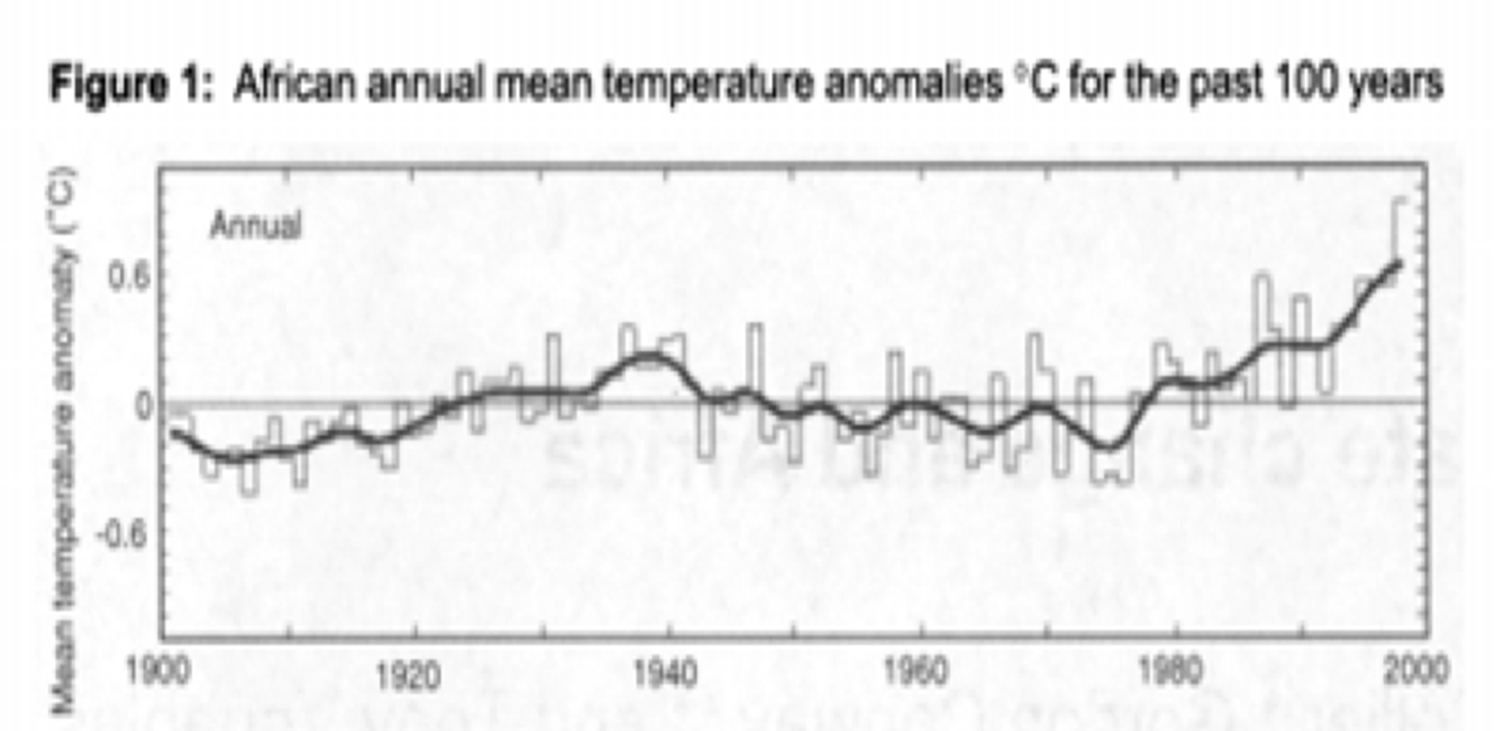
Figure 2. Observed and projected changes in annual average temperature and precipitation54 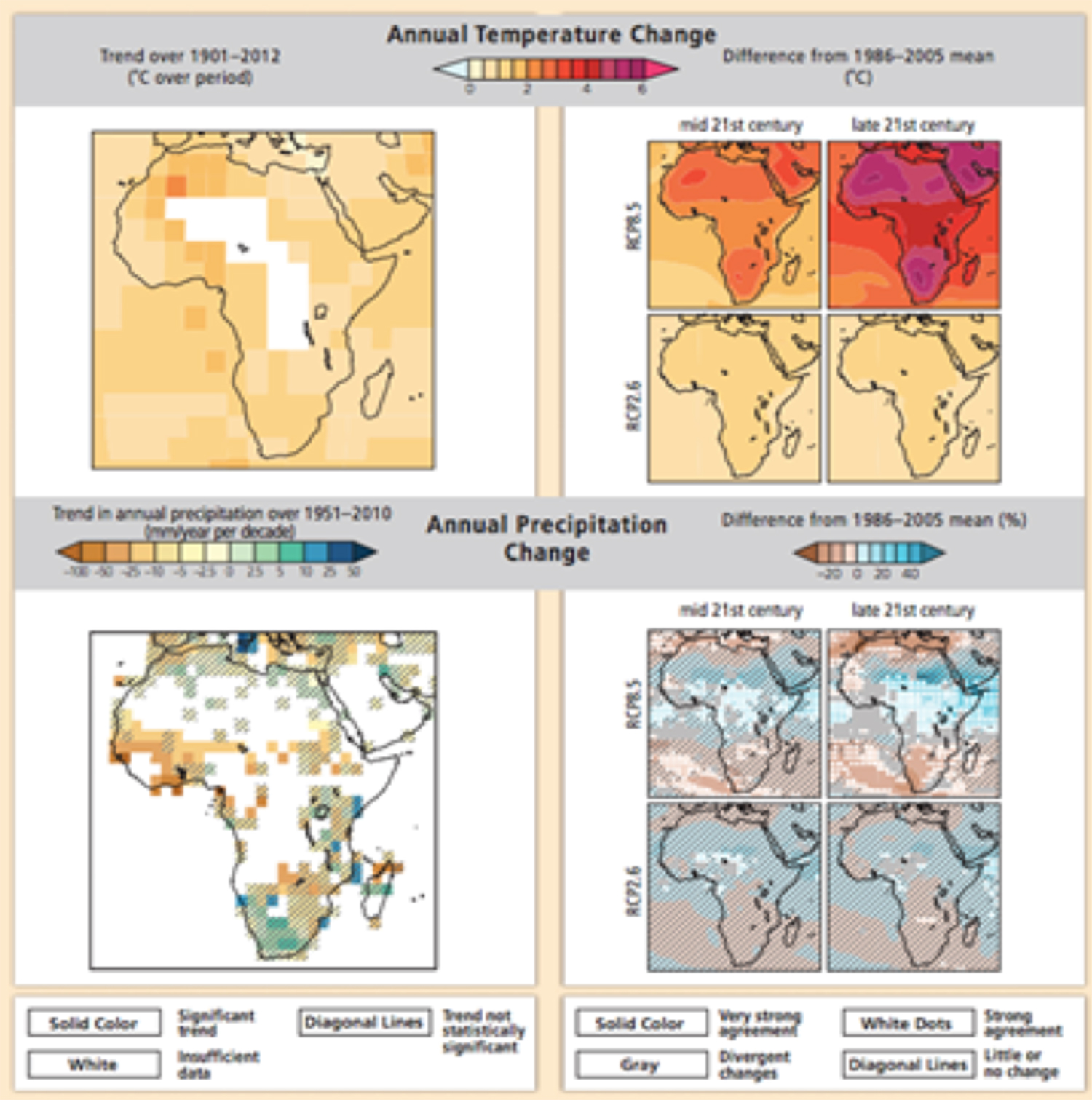
Figure 3. Number of African weather stations with precipitation data available in each year55
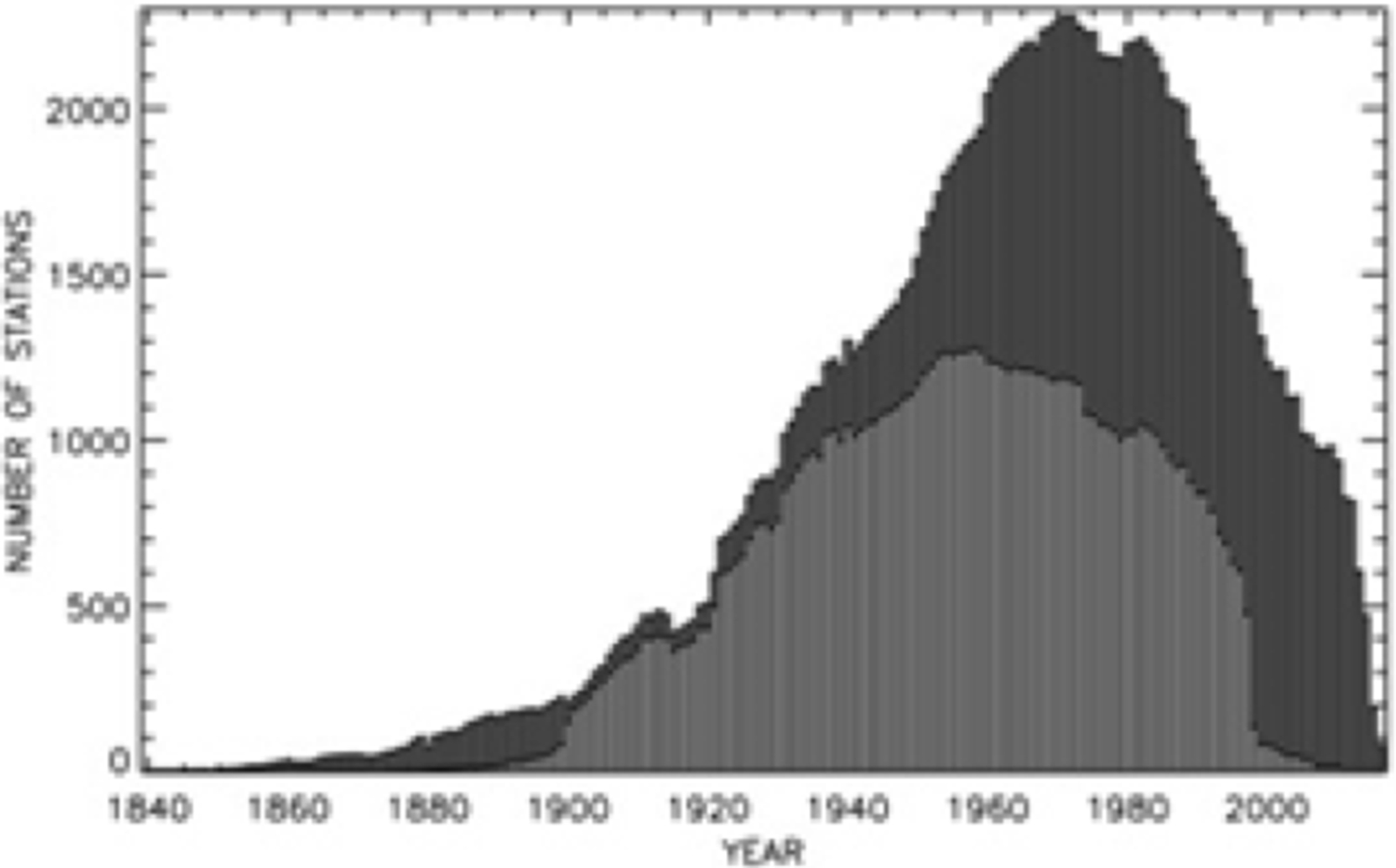
Figure 4. Spread of Bird Flu Virus H5N8, 2016-1756
